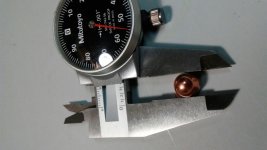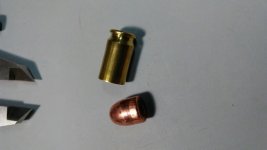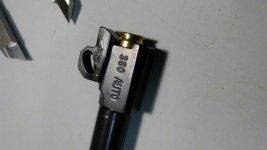turtlehead
New member
I am having a problem with a new batch of reloads not chambering fully. Am using a new bullet for the first time. It's a Berry's 100 grain .356 diameter seated to .98 COL.
In the past I had been using Rainier bullets that were .355 seated to .98 COL. Never had a malfunction with those.
[/ATTACH][/ATTACH]
The cartridge is getting stuck in the chamber and causing an out of battery situation. I believe the bullet is getting stuck in the lands. After forcibly clearing the last malfunction the case was pulled away from the bullet. That's the one in the picture.
In the past I had been using Rainier bullets that were .355 seated to .98 COL. Never had a malfunction with those.
[/ATTACH][/ATTACH]
The cartridge is getting stuck in the chamber and causing an out of battery situation. I believe the bullet is getting stuck in the lands. After forcibly clearing the last malfunction the case was pulled away from the bullet. That's the one in the picture.



